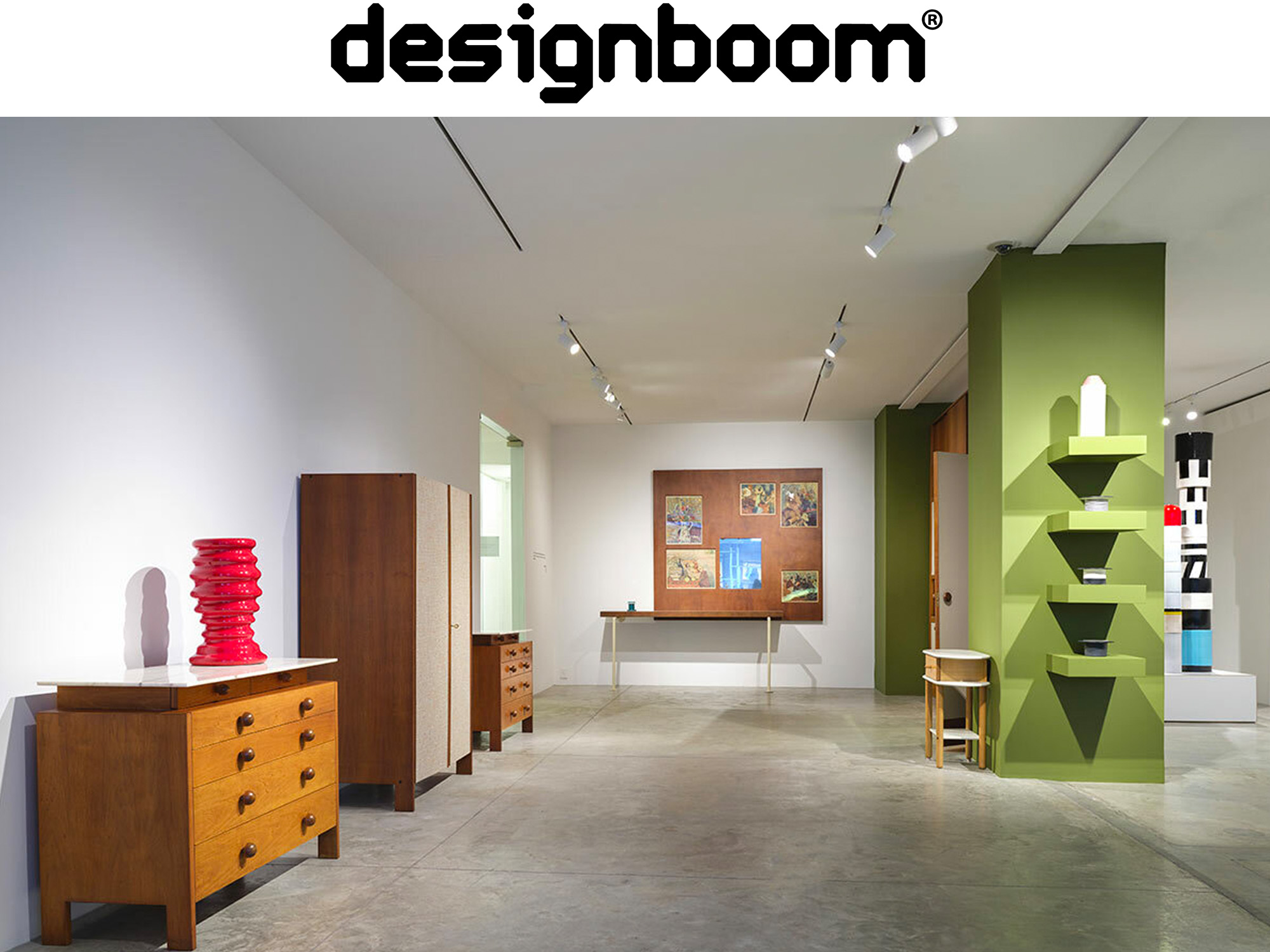By Kat Barandy
FRIEDMAN BENDA EXPLORES ETTORE SOTTSASS’ EARLY CAREER
On November 2nd, Friedman Benda opened its latest exhibition, Ettore Sottsass 1947-1974, the ninth installment in an ongoing series dedicated to the iconic Italian architect and designer. The show highlights curator Marc Benda’s enduring explorations into Sottsass‘ life and work, and focuses on the early, pre-Memphis period of his career with rare works displayed alongside a collection of original drawings and publications. The exhibition reveals influences from the Jugendstil movement of Austria, where he traces his roots, along with South Asian and American influences that were born from his journeys throughout the regions. The show is a curated threshold to understanding the diverse periods of the designer’s life, further illustrated by an accompanying catalogue and essay penned by independent curator and advisor Simon Andrews.
designboom spoke with Marc Benda during the opening of ‘Ettore Sottsass 1947-1974,’ which is open from November 2nd — December 16th, 2023 at Friedman Benda Gallery, at 515 West 26th Street, find the interview below!
THE DESIGNER’S EVOLVING VISION EXHIBITED IN NEW YORK
Entering the Ettore Sottsass 1947-1974 exhibition at Friedman Benda’s New York gallery, visitors are greeted by a pair of furniture pieces that diverge from the vibrant style which which the designer is typically associated. They are a 1947-built Entrance Table and Panel from Casa Cittone alongside a large-scale Storage Partition from 1965. The Entrance Table and Panel, a collaboration with his father, was among his earliest design projects and was crafted for the interior of Negozio Cittone in Turin. This marked the inception of his journey into furniture design. In the mid-1950s, Sottsass began his long-lasting collaboration with the Florence-based furniture manufacturer Poltronova. It was through this partnership that Sottsass began to develop his unique vision, to not merely to create products but also expressive and provocative ideas. Meanwhile, the large-scale Storage Partition was part of Sottsass’ ambitious interior design for the Tufarelli residence in Capri in 1965.
SOTTSASS’ MULTI-CULTURAL INFLUENCES
Friedman Benda displays a selection of Ettore Sottsass’ rare ceramic works which mark a significant shift in his design philosophies, spurred by his travels in India and time spent in the United States. In 1961, Sottsass had become critically ill after returning from South Asia and, at the insistence of his collaborator Roberto Olivetti, he was sent to Palo Alto, California for experimental medical treatment. Advisor Simon Andrews, in his essay for the exhibition, describes this period of illness as a time of great introspection, where Sottsass began ‘immersing himself in Eastern philosophies and stories of ancient cultures.’ He met Alan Ginsberg in California, and was exposed to the budding counterculture movement of the sixties. He printed his own magazine ‘East 128 Chronicle,’ a reference to his hospital room number, which is displayed at Friedman Benda alongside other drawings and prints.
New design motifs for the artist, such as stacked totems and stepping ziggurats, reference Indian religious symbols and Aztec sculptures — most notably seen through his collection of ‘Yantra’ ceramics. The seven-foot-tall ‘Due Menhir e Grande Fallo’ from 1966 is one of only four triptych totems created by Sottsass. Friedman Benda displays this towering work, marking the first time it is shown in a gallery context (it was previously exhibited at the Metropolitan Museum of Art and the ICA, Miami). All together, the diverse pieces tell the story of Ettore Sottsass’ evolving design philosophy over a quarter of a century.
IN CONVERSATION WITH MARC BENDA
designboom: What makes Ettore Sottsass’ work so unique and influential?
Marc Benda (MB): It helped that he had sixty years under his belt! What made him so important is that he always followed a very distinct vision. He chose not to follow trends or mainstream influences. He really followed his own his own trajectory — he never stopped.
In fact, there was always a commitment to innovation in every sense, from materials to form. The most important thing is that he was a real renaissance man. He was somebody who painted, who used a camera, who drew, who used clay, made furniture, and was an architect. But he didn’t really distinguish between all these different media — it all came from the same place. I’ve never, in my professional life, witnessed anyone who has been able to have such a sheer magnitude design influence. So we could take all that into account, he was a hugely influential person who just kept bringing forward the options that didn’t exist.
DB: What was his relationship with what was trending at the time, with modernism?
MB: A lot of his work was in response to what he saw around him. He traveled a lot, came home from Southeast Asia, and that influenced his form-giving in a way that didn’t exist before in Italian design. He was born in 1917 in what was then Austria territory. His father was Austrian and was educated within the Austrian secession. In this show, for example, you have pieces that he made in 1974 that he called the Vienna tables.
So it all fermented within him. It’s not that his earliest influences were gone. He said that each of these elements became a part of something over time, and they became part of something that was his. It wasn’t an homage to anything that happened sixty years ago, but it was an influence from something then.










